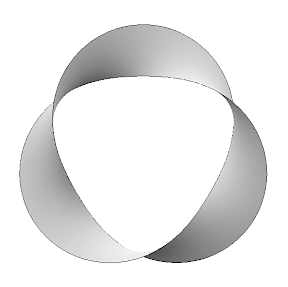The technology news streams have been filled with coverage of the new Google phone called the Nexus One. It’s impact will be significant. Now there are two “phones” in the new landscape of mobile computing. Two are required to accelerate both innovation and diffusion of the technology. The Nexus One will both spur, and be spurred on by, the iPhone.
Much of the coverage has focused on comparisons of the two devices with regard to feature set and approach to the carriers. On the product strategy side, the story of the early Macintosh vs. Windows battle is being replayed by the pundits with Google cast in the role of Microsoft, and Android as the new Windows. The conventional wisdom is that Apple lost to Microsoft in the battle of operating systems, and that history will repeat itself with the iPhone.
A quick look at the top five U.S. companies by market capitalization shows Microsoft, Google and Apple holding down three of those spots. Apple’s so-called losing strategy has resulted in a market cap of $190 Billion and a strong, vibrant business. If history repeating itself leads to this kind of financial performance, I’m sure Apple would find that more than acceptable.
But it was watching Gary Hustwit’s film Objectified that brought forward a comparison that I haven’t seen in all the crosstalk. Following up his film, Helvetica, which documented the history of the typeface, Hustwit takes a look at the world of industrial design and designers:
Objectified is a feature-length documentary about our complex relationship with manufactured objects and, by extension, the people who design them. It’s a look at the creativity at work behind everything from toothbrushes to tech gadgets. It’s about the designers who re-examine, re-evaluate and re-invent our manufactured environment on a daily basis. It’s about personal expression, identity, consumerism, and sustainability.
Industrial design used to be about designing the look and feel of a product— the designer was brought in to make it pretty and usable. Now the whole lifecycle of the product is considered in the design process. I’ve found John Thackara’s book In The Bubble, and Bruce Sterling’s Shaping Things to be very eloquent on the subject. Looking beyond how the phone works for the user, there’s the environmental impact of the industrial manufacturing process and disposing of the phone at the end of its life.
It was Craig Burton’s Choix Vert Action Card that brought Apple’s policies on industrial design and the environment into view for me. While searching Google for something related to Apple, the Choix Vert card adds a thumbprint logo to socially responsible companies on the results page. Apple sports the Choix Vert mark, HTC, producer of the Nexus One, doesn’t. Currently Apple provides environmental impact reports for each of their products. Apple’s so-called ‘closed’ approach to their products results in a unique ability to control, not only the user experience, but how the product is manufactured, and what happens at the end of its life.
Google’s modular approach to their phone means they can claim they aren’t responsible for manufacturing or disposal. The Android phone run-time will be put on a variety of phones with manufactured by companies with varying degrees of social responsibility.
Early reports from users indicate that the Nexus One’s user interface could use a little more polish. I expect that will happen as the software is iterated and the user experience refined. But beyond feature sets and carrier costs, I hope Nexus One users will ask Google about the environmental impact of their phone.
Every year about 130 million cellphones are retired, for every Nexus One that’s purchased, it’s likely that another cell phone will go out of service. Google is now in the consumer hardware business, and that brings with it some responsibilities they aren’t used to considering. Given their corporate motto, I’m sure they’ll do the right thing.




